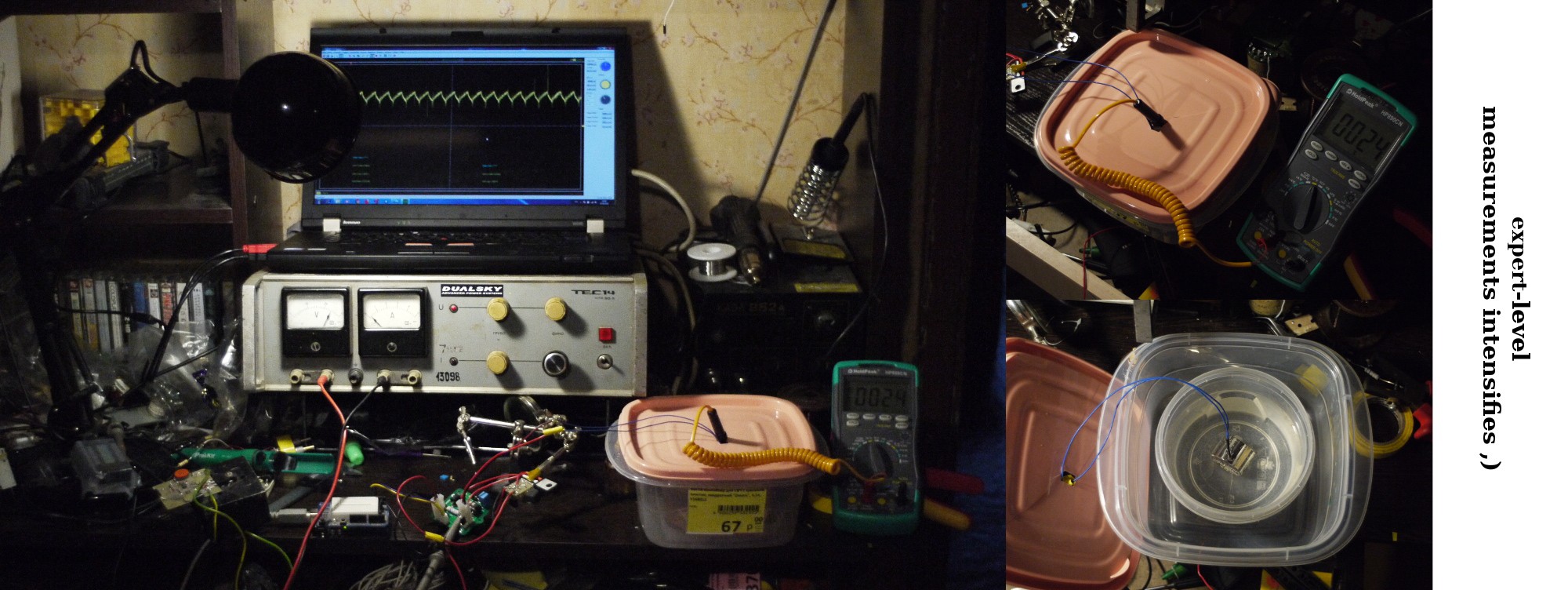I advise reading previous update ("Bye, DC!"), it's a crucial part - it contains important ideas about power & energy in electric circuits, revealing phenomenon of inductance and resistance on a new level - now it's my instrument of choice for working with electromagnetic processes.
Hello everyone! Again : )
Previously, I described a proportion, in which power allocates between charging electromagnetic field and heating a conductor and it was a bit of a shock for me, originally I wondered, how we can eliminate heat dissipation completely. Now it seems impossible? Not quite!
I see two ways, how to come round that heating misconception:
1) We can develop a new sort of electromagnets! If we assume, that proper distribution of charge in space (and not specifically in a conductor) creates a magnetic field, that means, that we can recreate it similarly to a capacitor. It would be a charge-dependant electromagnet, which can store electromagnetic energy as long, as charges present in it. In a traditional coil waste of power dictated by a unstable state of charges, covering a conductor - you need to apply external "force" to prevent "positive and negative charges" from collapsing, that's why applying voltage is an essential thing there. However, I failed to notice any sort of a magnetic field around flat capacitor. It doesn't mean, that it's 100% not there - it's probable, that Earth's magnetic field outruns weak field of a capacitor - it requires more studying. If I would get an idea how to make such a thing - I would share it here. It would be epic, if it's possible ; )
2) We can exploit an interesting behaviour of a traditional coils. More on that in next part:
Exploiting physics:
Even an energy dissipation law has it's own backdoor! And this backdoor is a fact, that if you apply no power to a conductor and retrieve most of energy, that it gives to you, it's not likely to dissipate something into the air. Current might stay the same, who cares!
I made some measurements:
 I submerged my electromagnet into a vessel with water and powered it up, recording changes in temperature. It takes about an hour to temperature to drop down for a 2 degrees in this setup, as it features some thermal insulation after all, water volume stayed untouched
I submerged my electromagnet into a vessel with water and powered it up, recording changes in temperature. It takes about an hour to temperature to drop down for a 2 degrees in this setup, as it features some thermal insulation after all, water volume stayed untouched
Here are results:
 Control circuit changed situation a lot - reducing energy dissipation for about 30%
Control circuit changed situation a lot - reducing energy dissipation for about 30%
On the right side you can see oscilloscope date, isn't it looks familiar? :)
That then, 30% is our upper limit? Not at all! Retention of energy goes on a constant rate independently of a charging rate, as it is a typical LC oscillatory circuit. We can use it in our favour, increasing charging speed. Here are few samples with another electromagnet:
 Using higher voltage, we get great charging:retention proportion, also - increase in a field-charging efficiency, according to a model presented in a previous update.
Using higher voltage, we get great charging:retention proportion, also - increase in a field-charging efficiency, according to a model presented in a previous update.Conclusion:
Increasing retention time looks like a solution, can it be done by increasing capacity?
Who knows! Time will show!
Is it possible now to pump 300W into a electromagnet without burning it down?
Theoretically - yes. But new version of a control circuit is needed.
That one isn't suited to withstand such voltages & currents yet.
Can we use these methods with BLDCs and stepper motors?
Sure! With everything that has coils.
It seems, that this project requires more time to finish. But it's so much fun!
Then I started it, I never imagined, how many things gonna be uncovered.
Stay tuned! I surely would finish it... Somewhere... )
 CapitanVeshdoki
CapitanVeshdoki
Discussions
Become a Hackaday.io Member
Create an account to leave a comment. Already have an account? Log In.